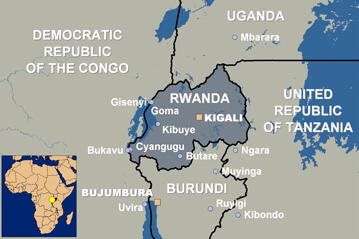Unit plan for ages 12-14 in History: The Rwandan Crisis 1994
Unit plan for ages 12-14 in History: The Rwandan Crisis 1994
-

Designed by Population and Geographic Data Section in Division of Operational Support
UNIT OBJECTIVES
Knowledge
- To understand the background of events which shook Rwanda in 1994.
- To understand what genocide is.
- To understand the process and reasons which triggered the flow of refugees from Rwanda into neighbouring countries.
Skills
- To practise research skills:
- defining a problem
- seeking appropriate information sources
- identifying relevant information from the sources
- critically analysing the information
- organising the information to answer particular questions
- clear written expression
Values
- To appreciate the importance of moral values.
- To appreciate the importance of respect for others, particularly people different from oneself.
LESSONS 1 and 2: How did the Rwandan crisis start?
| ||||||||
LESSON 3: The 'G' word
| ||||||||
LESSONS 4 and 5: Going back home
| ||||||||





